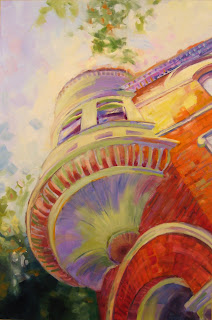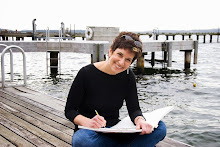 Lighthouses are popular. They’re iconic. They’re collectable. There are lighthouse calendars, lighthouse statues that have real lights inside, lighthouse salt and pepper shakers, and lighthouse designs on socks. Why? What is it about these flashlight-like buildings? They’re not even being used much anymore now that ships have more technical gadgets than a Best Buy Sunday newspaper ad.
Lighthouses are popular. They’re iconic. They’re collectable. There are lighthouse calendars, lighthouse statues that have real lights inside, lighthouse salt and pepper shakers, and lighthouse designs on socks. Why? What is it about these flashlight-like buildings? They’re not even being used much anymore now that ships have more technical gadgets than a Best Buy Sunday newspaper ad. Some old things are never reminisced over. You don’t see little ceramic salt and pepper shakers that replicate old black and white tv’s much. Nor do you find pictures of butter churns on socks. And those were both as useful as lighthouses.
Lighthouses are symbolic for lots of folks. People think security and safety when they see lighthouses so insurance companies and the like might choose it for their logo. Lighthouse International is an organization for the blind that chose the lighthouse as their symbol. Wikipedia informed me that lighthouses are “often interpreted in dreams as beacons of truth or as male fertility and influence.” It always comes back to sex, doesn’t it?
I can’t even tell you exactly why I chose to paint the lighthouse near Port Townsend except that I simply wanted it and that windswept tree rising above the horizon. Perhaps all or none of the above reasons are why. It’s been framed and up for a year and just recently, I’ve been illuminated as to what wasn’t quite right in the painting. My original sky and sand were too dark. Here you see the brightened up version- a little light shed on my painting.
Enjoy it in person while it’s up at Kirkland Fine Art Gallery, 122 Central Way, Kirkland, WA 98033. The gallery is open every day Dec. 4- Dec. 24.































